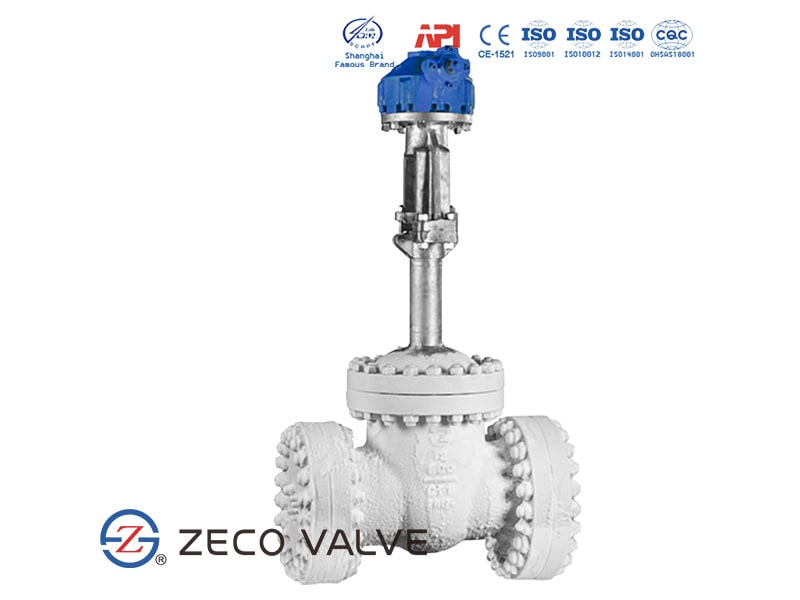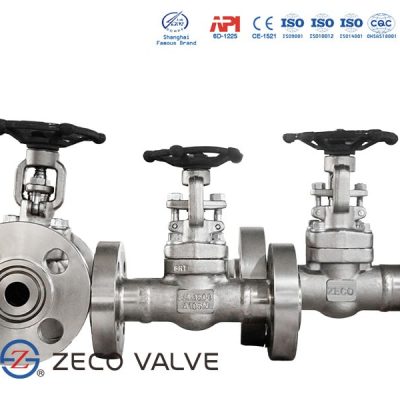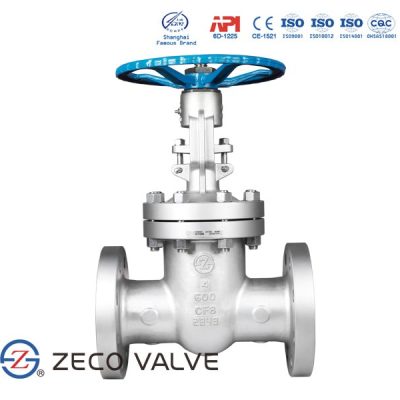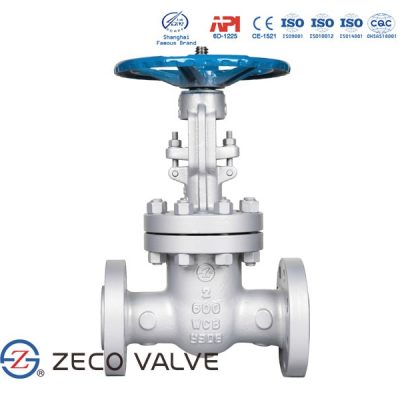Description
Cryogenic gate valves are adapted to special conditions of service, being designed to operate effectively at temperatures below -40ºC, mainly used in gas liquefaction systems.
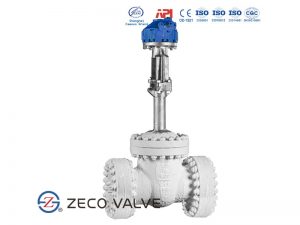
What is a Cryogenic Valve?
Piping and Pipeline systems handling liquid hydrogen, oxygen, helium, nitrogen, liquefied natural gas, or similar very cold fluids require to use of cryogenic valves. The term cryogenics deals with the materials and processes below -1010C (-2390F). Hence, Cryogenic valves must be designed with properties to handle such low temperatures. The main difference between cryogenic valves from standard valves is that they are able to work in such low temperatures with high pressures.
Why do Cryogenic Valves have long stems?
All cryogenic valves for liquid natural gas, methane, oxygen, ammonia, etc applications are specially designed. Cryogenic valves usually have extended bonnets so that the valve stem seals are kept away from the cold source. This will serve two important purposes:
- The valve stem seals will have a relatively higher temperature.
- There will be sufficient space to provide insulation between the pipeline and the lever/handwheel operating the valve.
Materials of Cryogenic Valves
Usual materials that are used for constructing a cryogenic valve are Aluminum, Monel, Brass, bronze, Stainless Steel, Incoly, Zirconium, etc. PTFE or graphite is normally used as the seal material.
What is a Cryogenic Gate Valve?
With ZECO cryogenic gate valves, the flow rate is three to five times higher than with globe valves of comparable size. This speeds up the filling of tanks and trailers and saves valuable time for the delivery of cryogenic liquefied gases.
The cryogenic gate valves are available in sizes from 1″ to 24″ and secure pressures up to 1500LB, at operating temperatures of -196°C to +120°C. The gate valves are manufactured in stainless steel.
Features of Cryogenic Gate Valve:
All basic design features of ZECO cast steel gate valves are adapted to special service conditions at cryogenic temperatures.
ADDITIONAL DESIGN FEATURES:
- Extended bonnets with sufficient gas column length, usually specified by customer, are supplied for all valves to keep stem packing at sufficient distance away from the cold fluid to remain functional.
- Flexible wedges with CoCr alloy seating faces for cryogenic service.
- Cleaning: All cryogenic valves are thoroughly degreased and cleaned and pipe ends are sealed to prevent contamination.
- Low emission packing
- Bleed hole between upstream and backseat to prevent the pressure increase of body cavity.
- Prevent stem unstable structure
Material of Cryogenic Gate Valve:
| No | Part | Material |
| 1 | Body | ASTM A350 LF3 |
| 2 | Seat Ring | ASTM A276 410 + STL |
| 3 | Wedge | ASTM A350 LF3 + STL |
| 4 | Stem | ASTM A182 F6 |
| 5 | Bonnet Gasket | Graphite + SS316 |
| 6 | Bonnet Bolt | ASTM A193 B16 |
| 7 | Bonnet Nut | ASTM A194 4 |
| 8 | Bonnet | ASTM A350 LF3 |
| 9 | Backseat | ASTM A182 410 |
| 10 | Stem Packing | Reinforced Graphite |
| 11 | Handwheel | KTH330-08 |

